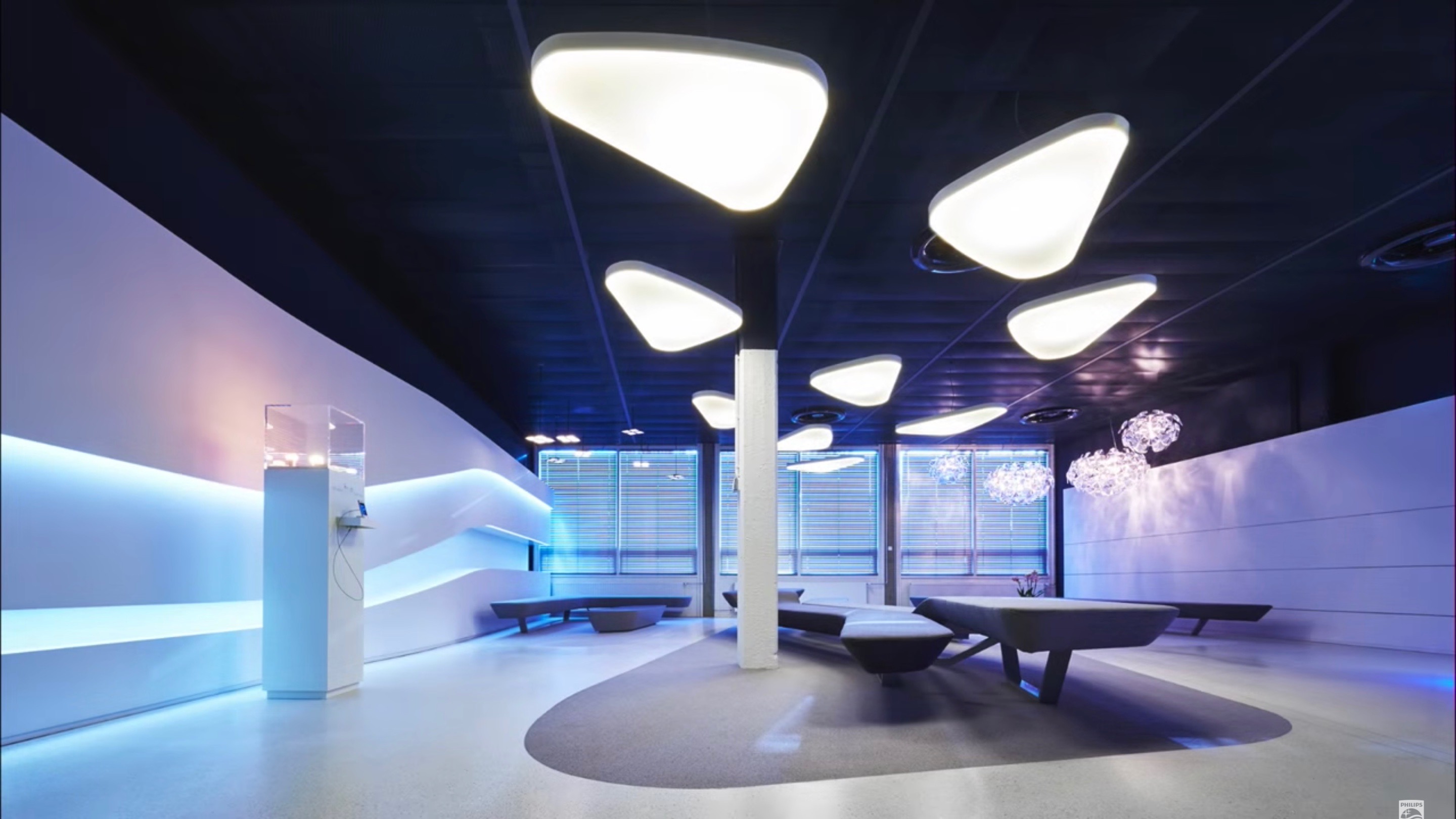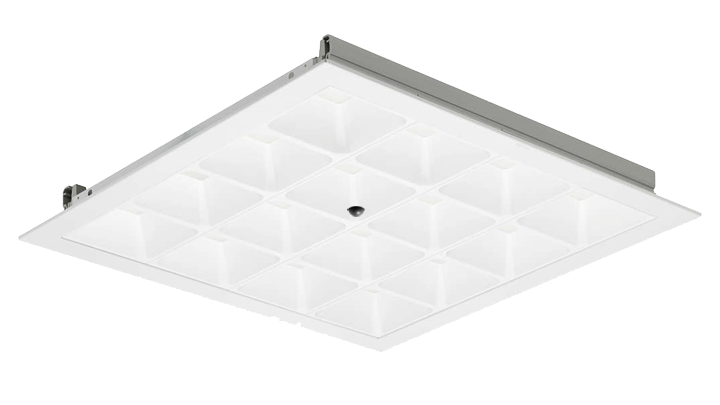Philips tests internet over light waves in a real-world office
Li-Fi to replace standard Wi-Fi?

Philips, maker of some of our favorite TVs and smart bulbs, has developed intelligent light panels that could completely change how we access the internet in the workplace and at home.
In a press release today, Philips Light revealed its new Li-Fi technology. Unlike Wi-Fi, which transmits and receives data via radio waves, Li-Fi generates a two-way broadband connection via light waves, and it supposedly can reach speeds over 100 times faster than Wi-Fi.
The Dutch tech company has created LED office lighting panels that integrate a specialized modem directly inside the fixture. In an infographic, Philips purports to hit speeds of 30 Mbs of broadband “without compromising light quality”.
The LED luminaires have a straightforward design. You connect a USB access key dongle to your device; once it’s plugged in, it emits a light signal that tells the embedded LED modem to start transmitting broadband data. The USB dongle receives the data, then uses its infrared emitter to send data back towards the modem.
One French real estate investment firm, Icade, has already begun testing out the Li-Fi panels in its office. But Philips believes the best environment for Li-Fi is in workplaces with “radio-frequency hostile environments”, such as hospitals or planes, where radio waves could interfere with equipment.
“While radio frequencies are becoming congested, the visible light spectrum is an untapped resource with a large bandwidth suitable for the stable simultaneous connection of a vast array of Internet of Things devices,” says Olivia Qiu, Chief Innovation Officer at Philips Lighting.
Potential and limitations
Philips’ press release claims its Li-Fi bandwidth can hit 10,000 times that of Wi-Fi, and that its broadband will let users “stream simultaneously several HD quality videos while having video calls.” But light wave signals have obvious limitations that radio waves don’t share.
Sign up for breaking news, reviews, opinion, top tech deals, and more.
Li-Fi requires line of sight from its luminaires directly to the USB dongles. This might work fine for an open office, but maybe not for one full of cubicles or separated offices, unless you can install individual smart panels throughout the office. Shadows or direct sunlight from a window could prevent Li-Fi from reaching your USB sensor.
Yet Philips has tried to overcome these limitations. If you can’t get a good light signal or need to move across the office, it offers “seamless hand-over between light points”, so your data connection is preserved from one LED modem to the next.

And while line-of-sight requirements could prove frustrating, Philips claims this limitation doubles as a plus for security. Because light cannot pass through solid walls like radio waves, you’re always certain that no one outside your office can access your network. Government buildings with strict security needs will likely find this feature promising.
Still, we don’t know yet how much these interconnected, secure Li-Fi panels would cost an everyday consumer. Considering Philips is currently only marketing them to businesses, the price tag might be steep to anyone who isn’t a government agency.
Li-Fi could prove more of an add-on to Wi-Fi for the time being, at least until more devices add native functionality to intercept light waves without an accessory.
Apple toyed with this technology for the iPhone 7 a couple of years back, but we never heard anything to suggest the company followed through. But if Philips’ LED modems prove popular, Apple and other companies might reconsider.
- Here's a bright idea: check out the best smart TVs around!

Michael Hicks began his freelance writing career with TechRadar in 2016, covering emerging tech like VR and self-driving cars. Nowadays, he works as a staff editor for Android Central, but still writes occasional TR reviews, how-tos and explainers on phones, tablets, smart home devices, and other tech.